As we saw before here, performing a patent prior art search before applying for a patent is the single most effective step you can take to prevent going in the wrong direction with your patent strategy.
Similarly, prior art is what can make the difference between winning or losing a patent litigation case, or give you the upper hand in patent licensing, M&A, and pledging.
We took a look at this aspect in detail in our series of articles on the TSMC v. GlobalFoundries case.
As a side note, if you are a patent attorney, being a champion at conducting a patent prior art search can get you more–and better–clients more frequently: here is why.
That being said, find below the four quickest and easiest ways to spot prior art references.
How to Perform A Patent Prior Art Search in One Click
In Quality Insights (free trial available here), key in the patent number you are interested in and access the dashboard.

1. Let’s start with Rejection Prior Art
These are the prior art references that are cited in the prosecution history and the post-grant proceedings and they are usually based on 35 U.S.C. § 102 and § 103.
Simply go to the Overview tab and the rejection prior art references will be listed there as § 102 and § 103 references.
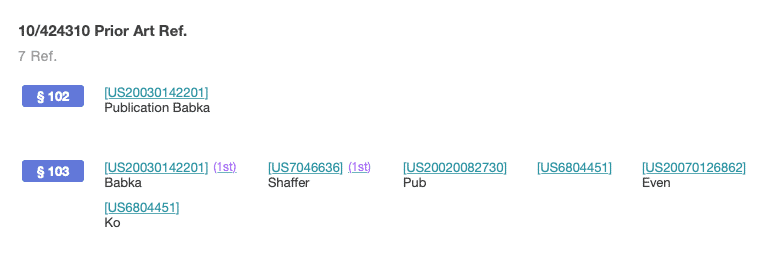
Bonus shortcut: In addition to the Overview tab, you can also review the rejection prior art references that are specifically related to the claims at issue.
Just go to the Claim Insights tab, where you can see the relationship between the rejection prior art reference and the claims of the patent, all in a convenient table.
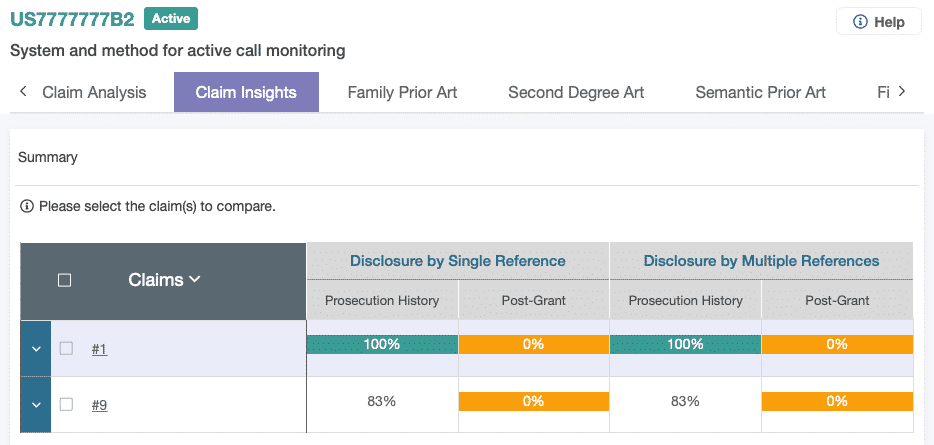
But that’s not all: In Claim Insights, you can also see a comparison of the claim elements and the references based on the patent examiner’s opinion in the file wrapper.
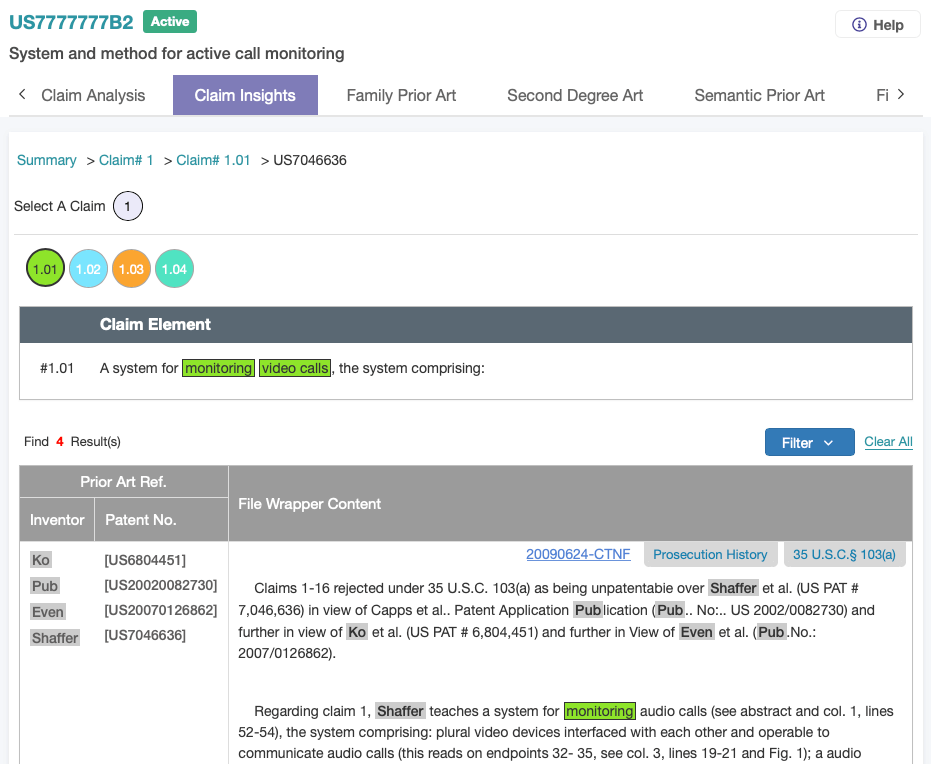
You can learn more about the features available in Claim Insights here.
2. Family Prior Art is next
Not surprisingly, these prior art references are found in the Family Prior Art tab. A handy dashboard divides the numerous family prior art references into several categories, including the following:
- Applicable references
- Abandoned members
- Family member’s novelty or non-obvious references
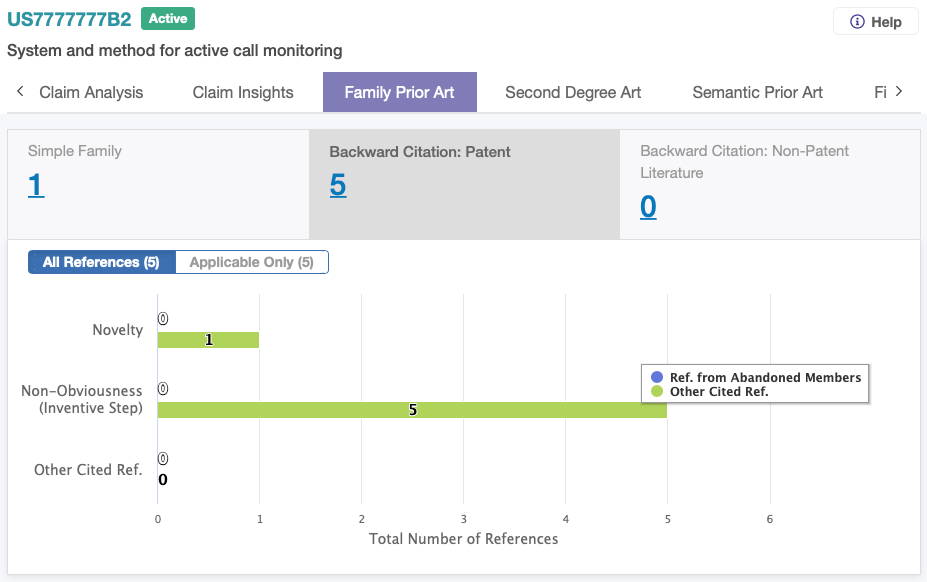
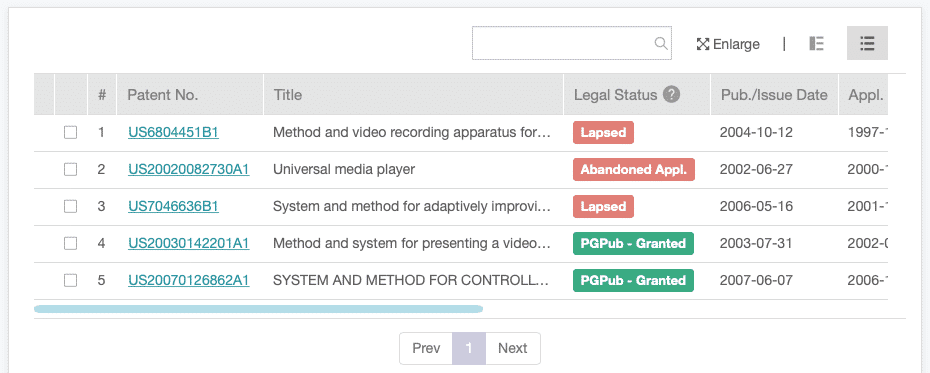
3. In third place, we have Second Degree Art
To locate these prior art references, make your way to the Second Degree Art tab. Although there may not always be a lot of references here, the ones that are here are usually very important and worthy of further review.
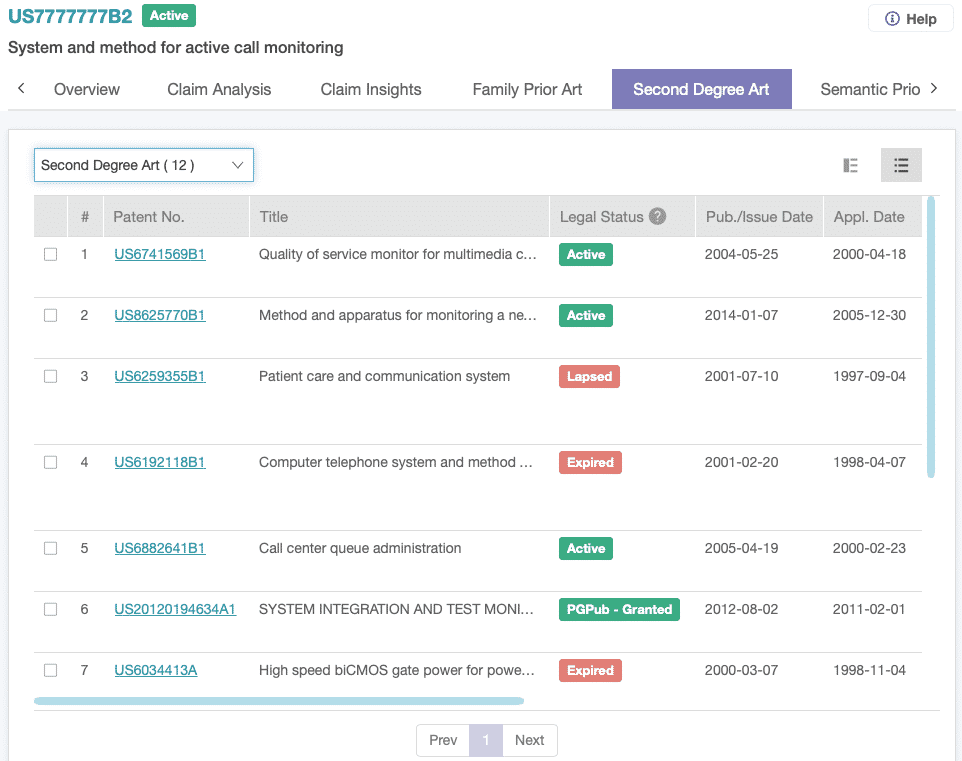
If you’re not familiar with the concept of Second Degree Art, read our article on the topic here.
4. The old favorite: Semantic Prior Art
This feature uses advanced AI and machine learning to find the relevance between the references and the patent at issue. Conveniently, the most relevant references are listed first.
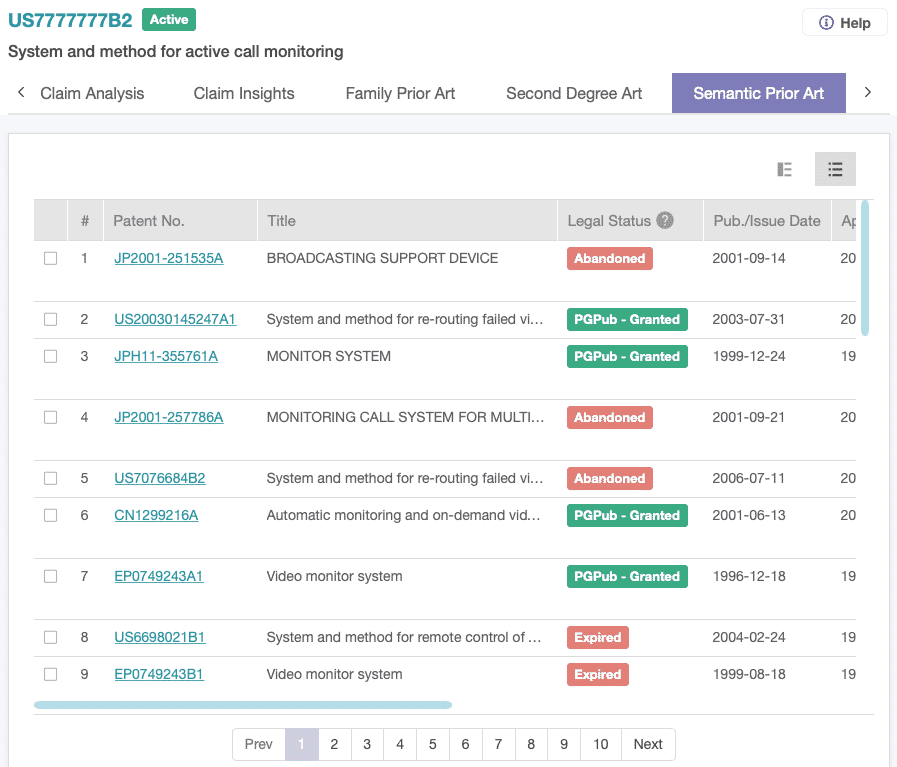
Bonus tip: Patentcloud’s Patent Vault is an excellent resource for further examination of the semantic prior art references from Quality Insights.
You can even use it to delve deeper into the family prior art references from Quality Insights as well.
In this way, you can conduct a patent prior art search through keywords to find additional references.
So, there you have it. When it comes to conducting a patent prior art search, there is no more powerful solution than Quality Insights and its four different features for finding prior art.
Get 2020 off to a good start: Head to this link for a free demo of all the features discussed in this article and become a patent prior art search champion too!


